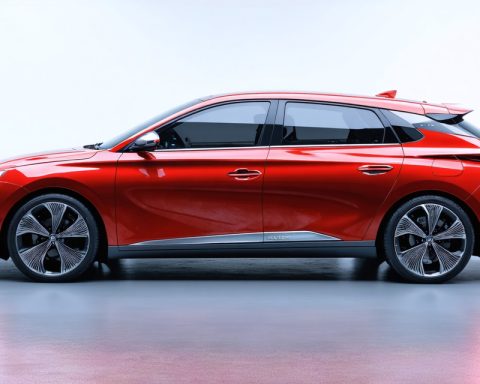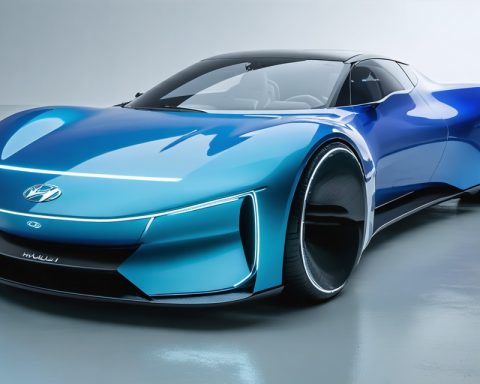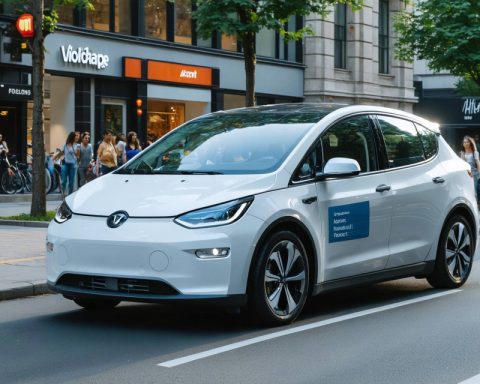- In New Zealand’s South Island, a remote EV charging station in Springs Junction is pioneering the use of recycled Nissan Leaf batteries in Battery Energy Storage Systems (BESS).
- This innovative approach supports sustainability by utilizing off-peak energy between 11 PM and 4 AM, demonstrating a creative solution to ‘charging deserts.’
- In collaboration with Relectrify, Meridian Energy orchestrated this project, overcoming challenges in network limitations through perseverance and technical innovation.
- Continuous monitoring ensures the system adapts and improves, aligning with New Zealand’s goals for low-emission transport.
- Co-funded by New Zealand’s Energy Efficiency and Conservation Authority (EECA), the project embodies forward-thinking environmental stewardship.
- Springs Junction symbolizes the potential of remote innovation to contribute to a cleaner and interconnected future.
As electric vehicles redefine the future of travel, innovation steps in where logistical improbabilities once reigned. In the serene expanse of New Zealand’s South Island, where wide pastures meet sky-framed mountains, a remarkable project is charging forward. Springs Junction, a remote enclave 208 kilometers from Christchurch, now hosts a groundbreaking electric vehicle (EV) charging station, defying the constraints of its solitude with human ingenuity and technological prowess.
Nestled against the backdrop of isolating beauty, the EV chargers are powered not by traditional means, but by the residue of a previous generation — recycled Nissan Leaf batteries. These batteries, integrated into advanced Battery Energy Storage Systems (BESS), offer a sustainable lifeline to the vibrantly green vision of the future. With an energy dance that takes place predominantly under the moonlit sky, these BESS units harness their power when the world dreams, charging from 11 PM to 4 AM when demands are at their lowest.
Orchestrated by Meridian Energy, in collaboration with the Melbourne-based startup Relectrify, this innovative solution to ‘charging deserts’ epitomizes a blend of audacity and creativity. The deployment leans into Kiwi ingenuity, crafting an efficient circuit of energy that revolves around timing and need. The project’s timeline wasn’t without hurdles — unforeseen scenarios tested the limits of both technology and the human spirit behind the screens.
Meridian’s Tim Calder illustrates a narrative of perseverance, detailing the collaborative efforts required to surmount challenges of network limitations. The technical ballet involved reconfiguring code for energy absorption only when the grid could bear the load, transforming a trivial task into a significant success. This endeavor not only recuperates energy but resonates with the tenacity of New Zealand’s pioneering spirit.
While the system is operational, it isn’t time to rest on laurels. The performance will be continuously monitored, signifying the fluid nature of innovation that seeks perfection and adaptation. Meanwhile, drivers fill their charging needs — urged gently to take less, allowing for more, each conscious decision reflecting a broader understanding of sustainability.
Beyond its technical triumphs, Springs Junction stands as a monument to forward-thinking environmental stewardship, co-funded by New Zealand’s Energy Efficiency and Conservation Authority (EECA). This effort catalyzes a shift towards low-emission transport, showcasing how design and resourcefulness can sculpt pathways even in the most challenging of terrains.
As we steer into a new epoch of mobility, the tale of Springs Junction drives home a pivotal takeaway: innovation, no matter how remote the location, can illuminate the path toward a cleaner, more connected future. Such projects highlight our collective journey — not just in miles traveled, but in milestones reached.
The Breakthroughs Powering Remote Electric Vehicle Charging in New Zealand
The Future of Electric Vehicle Charging: Transformative Innovations from New Zealand
The project at Springs Junction serves as a groundbreaking example of using innovative technologies to overcome the challenges associated with electric vehicle (EV) charging infrastructure in remote areas. Let’s explore deeper insights and developments that define the future of EV charging.
How-to Steps for Implementing Remote EV Charging Solutions
1. Utilize Existing Resources: Recycled components, like the Nissan Leaf batteries, can form the foundation of sustainable energy systems.
2. Collaborate with Innovators: Partnerships between energy companies and tech startups, such as Meridian Energy and Relectrify, can yield efficient solutions tailored to specific geographical and logistical requirements.
3. Integrate Battery Storage Systems: Advanced Battery Energy Storage Systems (BESS) convert energy availability when demand is low, optimizing usage during off-peak hours.
4. Adapt to Network Limitations: Custom software programming is crucial for handling grid demands and regulating energy absorption effectively.
5. Continuous Monitoring and Adaptation: Performance tracking ensures systems run efficiently and allows for real-time adjustments to enhance service reliability.
Real-World Use Cases and Market Trends
With increasing adoption of EVs, the demand for innovative charging solutions in remote areas is gaining momentum, similar to developments in other parts of the world. For example, Tesla is advancing its charging networks to include off-grid locations in North America. Understanding and implementing these models across the globe could unlock unprecedented growth.
Reviews & Comparisons
– Advantages of Using Recycled Batteries: These systems provide an eco-friendly, cost-effective energy supply and extend the lifecycle of EV batteries.
– Drawbacks: Dependence on recycled components can result in variability in performance and energy capacity.
Challenges and Solutions
– Technical Hurdles: Adjustments in software coding and energy regulation are complex and require significant expertise and resources.
– Geographical Isolation: Infrastructure setup in remote areas poses logistical challenges, demanding robust planning and innovative solutions for success.
Pros & Cons Overview
Pros:
– Eco-friendly and cost-efficient
– Provides solutions for remote areas
– Decreases reliance on fossil fuels
Cons:
– Requires significant initial investment
– Relies heavily on collaboration and bespoke solutions
Insights & Predictions for the Future
As the global market for EVs and renewable energy expands, innovative approaches like those seen at Springs Junction are set to become more common. Market forecasts predict a rise in similar projects as governments and corporations aim for a low-carbon future.
Actionable Recommendations
1. Embrace New Technologies: Stay informed about emerging energy storage and management systems.
2. Encourage Collaborations: Support partnerships between tech companies and energy providers.
3. Invest in Infrastructure: Governments and private sectors should allocate resources for expanding charging infrastructure, especially in underserved areas.
By marrying advanced technologies with strategic collaborations, the future of electric vehicle charging stands to not only enhance travel convenience but also contribute to a sustainable, greener planet. Innovation knows no bounds and can indeed light up even the most remote places on Earth.

















